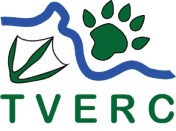Species Data Chit-chat
article written by Ellen Lee, TVERC Data Manager
We might be in a new year, but the data has kept on coming! 2023 turned out to be a record-breaking year with 584 data sets being sent to or acquired by TVERC and 2024 has got off to a brisk start. So, keeping up with this has been a challenge and the fact that we have done so (more or less!) is largely due to a small but dedicated band of data volunteers who check and format raw data (whatever the format it arrives in) ready to be imported into our database. As I write, the number of records in our database has risen to nearly 4.7 million. A little over 350k records were added in 2023.
It's not all about numbers though. Something else we are keen to do is to improve the quality of the records we hold. Of course, we are always handling our records and keeping a critical eye on them. However, QA also relies on our data users reporting things they notice back to us. When they do, we always investigate, and make changes if we find things amiss. Often, we can follow the “paper trail” (not always strictly speaking “paper”) back to original records to help our investigations. So, if you spot something, don’t feel shy!
Much of our time is taken with sourcing, processing and adding biological records to our database. However, at certain times of year, our attention turns to providing records instead. Our local authority and other partners and the organisations/individuals with whom we have data exchange agreements all receive data from us. We supply local authority and other partners species records three times annually (March, July & November) and habitats and sites information annually (in April). At our last species data drop back in November, the number of non-historical protected and otherwise notable species records stood at around 956k in the two counties. December is the time for supplying our data exchange partners, and in 2023 we supplied 18 local/national groups and individuals with data and hopefully receive data back from them.
The species data team doesn’t just wrangle species records. Some of us have been involved recently in the LNRS projects in the two counties, and our database provided each with an initial draft species list. This has set off a lively debate in the local LNRS working groups and will hopefully help focus co-ordinated conservation efforts in the long run. We also do development work to enable new ways of accessing and visualising the contents of the database. We are currently working to make the reporting of habitat indicator species much quicker and easier for our survey team. For me, it’s been a matter of an old dog learning new tricks! This has been fun, challenging and sometimes scary, but it all adds variety to our working lives!
Posted: January 29, 2024




